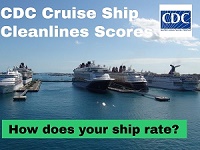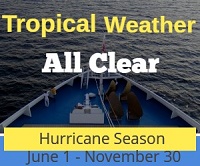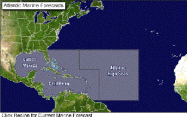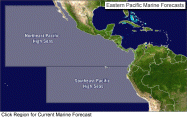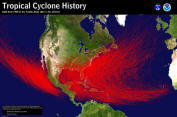Hurricanes and Cruising
Things you need to know about cruise ship safety before you leave port
Venice
Get to know our slice of Paradise - located on the SW Coast of Fl.
Attractions
Beaches
Canoe/Kayak
Boat Launches
Boat Charters
Fishing Charter
Fishing Piers
Historical Sites
Golf
Parks
Hotels
Relocate
Venice Map
Links
Coastal Seismic Areas
Alaska
Caribbean
Hawai`i
Indonesia
Italy
Japan
Volcano Maps
More Hazards
Tropical Cyclones
Weather Updates
Travel Warnings
Safety Overview
Cruise Ship
Fires
Sunken Passenger Ships
Sudden
Lists/Rogue Waves
More Links
CDC Ratings
Travel Warnings
Cruise Ship Safety
Cruising Advice
Ports Overview
Embarkation Ports
Best Caribbean Beaches
Clothing Optional Beaches
Pacific Hurricane Center Regional Offices
Weather Forecast Office, Honolulu, Hawai`i - Forecast programs for public, aviation, satellite, and marine interests for Hawai`i and offshore waters.
Weather Forecast Office, Tiyan, Guam - Forecast programs for public, aviation, and marine interests for Guam, the Northern Marianas Islands, and the Freely Associated States of Micronesia. The office also has Tropical Cyclone warning responsibilities in these areas.
Weather Service Office, Pago Pago, American Samoa - Forecast programs for public and marine interests for American Samoa. The office also has Tropical Cyclone warning responsibilities in the area.
Central Pacific Hurricane Center (CPHC) - CPHC issues all tropical cyclone warnings, watches, advisories, discussions, and statements for tropical cyclones in the Central Pacific from 140 Degrees West Longitude to the International Dateline.
Pacific Tsunami Warning Center (PTWC) - Located in Ewa Beach on Hawai`i's island of Oahu, PTWC provides tsunami warnings for Hawai`i and most countries in the Pacific Basin as well as other U.S. interests in the Pacific outside of Alaska and the U.S. West Coast.
International Tsunami Information Center (ITIC) - Collocated with Pacific Region Headquarters, ITIC coordinates the efforts to extend the services of the national tsunami warning system of the United States to the international community in the Pacific basin.
advice > safety > Natural Hazards - Tropical Cyclones
Hurricanes/Typhoons
A tropical cyclone is a storm system characterized by a low-pressure center and numerous thunderstorms that produce strong winds and heavy rain. They are fueled by a different heat mechanism than other cyclonic windstorms such as nor'easters, European windstorms, and polar lows. The characteristic that separates tropical cyclones from other cyclonic systems is that at any height in the atmosphere, the center of a tropical cyclone will be warmer than its surroundings; a phenomenon called "warm core" storm systems. "Hurricane" and "Typhoon" describe identical weather phenomena.
The Cooperative Institute for Meteorological Satellite Studies (CIMMS) Tropical Cyclone website offers up-to-date worldwide tracking of tropical cyclones.
Hurricane describes tropical cyclones found in the Atlantic basin (Atlantic Ocean, Caribbean Sea, and Gulf of Mexico), and the Eastern Pacific basin extending to 140°W. The Atlantic and eastern Pacific hurricane season runs from June 1st to November 30th, and the Eastern Pacific hurricane season runs from May 15th to November 30th.
Pacific Basin Typhoons
Typhoon describes cyclones that develop in the northwest Pacific basin (Pacific Ocean between 180° and 100°E . Nearly one-third of the world's tropical cyclones form within the western Pacific. This makes this basin the most active on Earth. Tropical cyclones form in any month of the year across the northwest Pacific ocean, and concentrate around June and November in the northern Indian ocean. The peak months correspond to that of the Atlantic hurricane seasons. Along with a high storm frequency, this basin also features the most globally intense storms on record. Pacific Hurricane Center
Weather Service Office in The Republic of the Marshall Islands (Majuro), The Federated States of Micronesia (Pohnpei, Chuuk, and Yap), and The Republic of Palau (Koror) - Surface and Upper Air Observing Programs and local forecast and warning.
Hazards
Tropical Cyclone hazards come in many forms, including storm surge, high winds, tornadoes, flooding and mudslides. Tropical cyclones not only pack high winds, but can also cause torrential rains that lead to flash flooding and abnormally high waves and storm surge. Known as "the triple threat," each of these alone can pose a serious threat to life and property. Taken together they are capable of inflicting a large loss of life and widespread destruction.
High Waves and Storm Surge
Large ocean swell ahead of the cyclone may reach island shores while the storm is several hundred miles away. As the cyclone nears the coastline, rapidly rising water levels from the wind-driven waves and storm surge will inundate coastal areas, erode beaches, and pound and undermine waterfront structures and roadways.
High Winds
Before the arrival of a cyclone, consider moving to a home or shelter located in an area less exposed to the wind. Remain indoors during the period of strongest winds since debris carried by the wind can become deadly missiles. Beware of the momentary calm that occurs with the passage of the hurricane's eye. Winds will increase rapidly from the opposite direction on the other side of the eye as the center of the hurricane moves forward.
Heavy Rain and Flash Flooding
Heavy and prolonged rains can accompany all types of tropical cyclones including hurricanes/typhoons, tropical storms, and tropical depressions. Even the weakest tropical depressions can bring torrential rains and cause flash flooding. If heavy rains are forecast for the area, listen to radio, TV, or NOAA Weather Radio for flash flood warnings and move to high ground if flooding is imminent or already occurring.
Tornadoes
Hurricanes can produce tornadoes that add to the storm's destructive power. Tornadoes are most likely to occur in the right-front quadrant of the hurricane. However, they are also often found elsewhere embedded in the rainbands, well away from the center of the hurricane. Some hurricanes seem to produce no tornadoes, while others develop multiple ones. In general, tornadoes associated with hurricanes are less intense than those that occur in the Great Plains. Nonetheless, the effects of tornadoes, added to the larger area of hurricane-force winds, can produce substantial damage.
Mudslides
Mountainous islands in the Caribbean receiving prolonged rainfall are subject to landslides/mudslides.
Sources: Wikipedia; USGS, NWS
